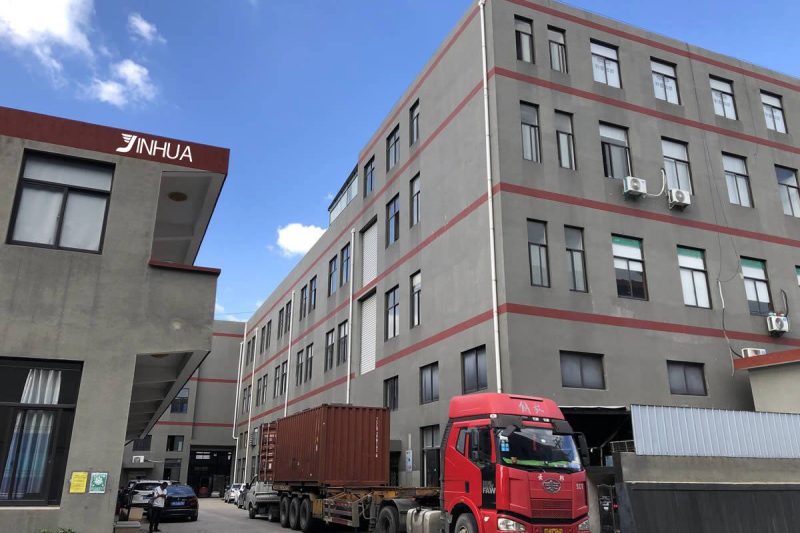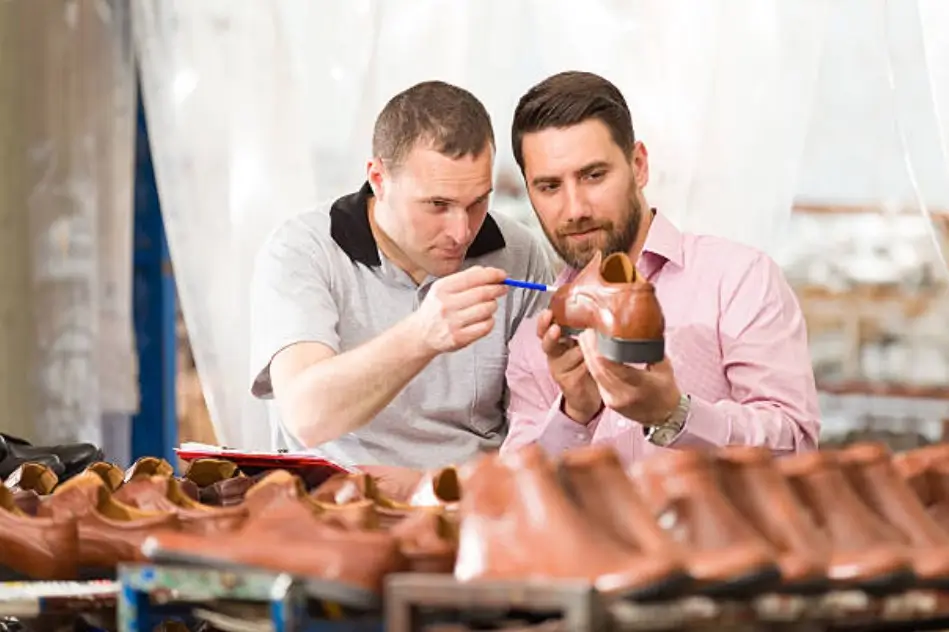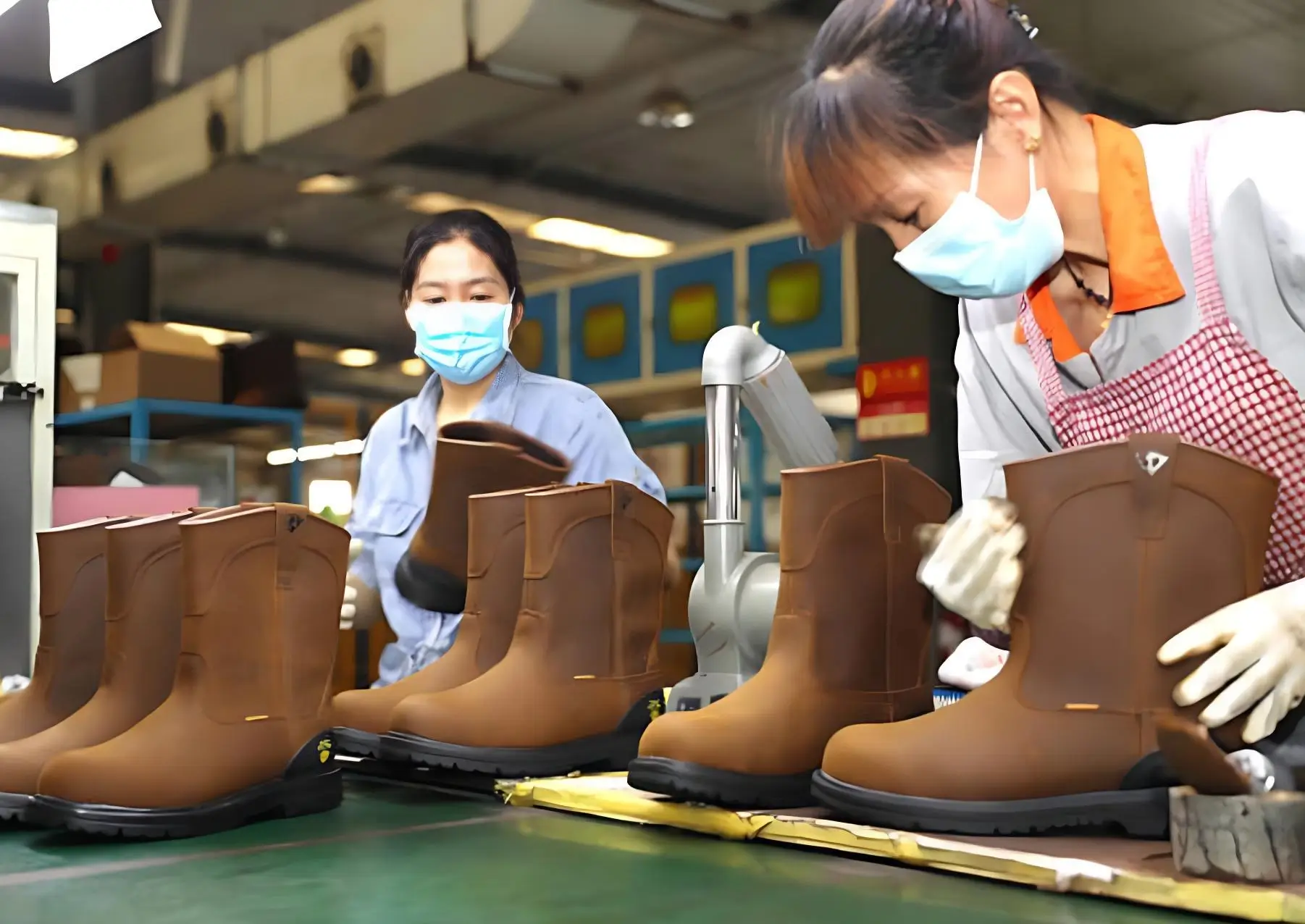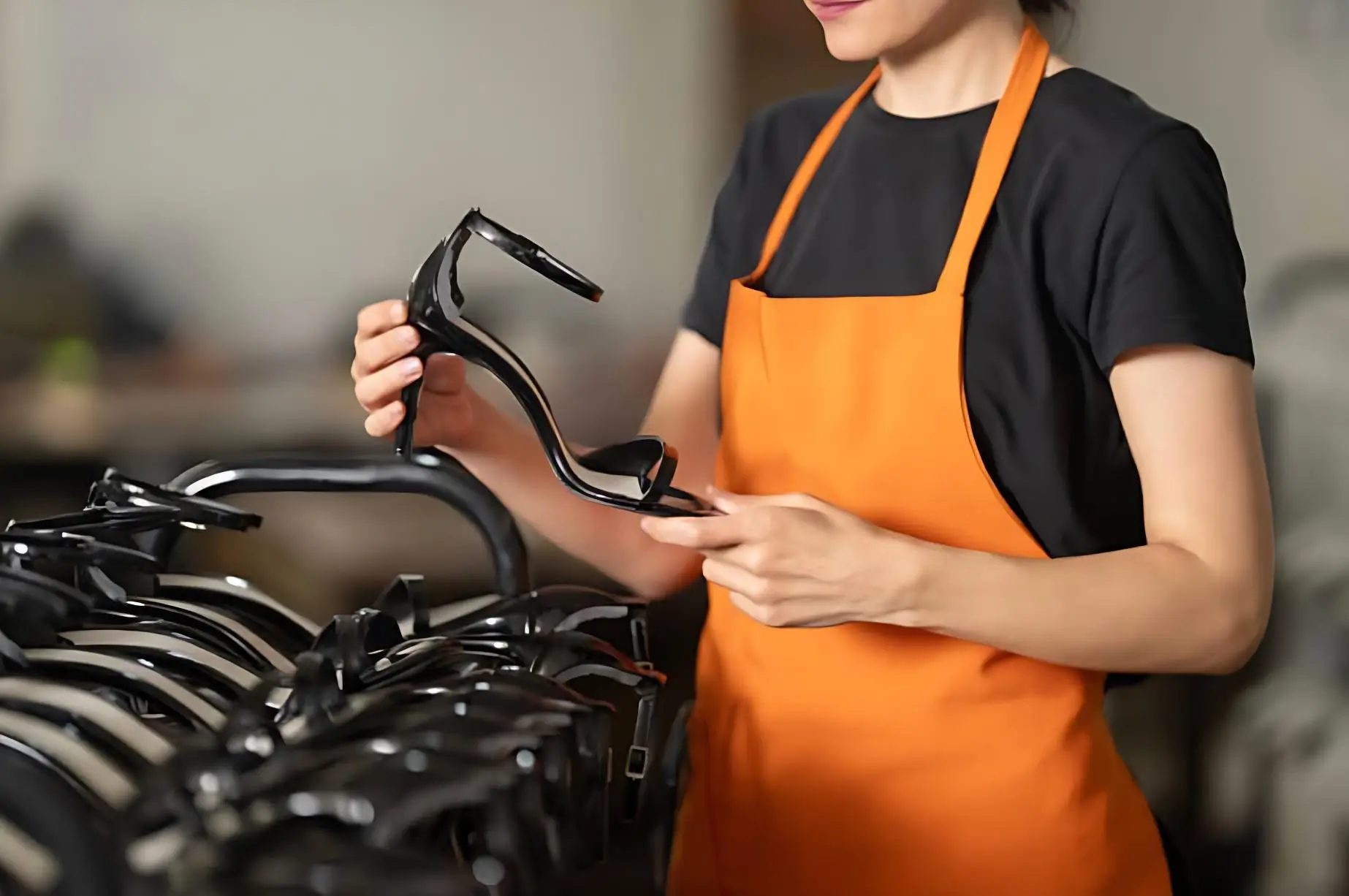As a brand owner, a wholesaler, or a distributor in the footwear industry, you know that profit isn’t just about selling more; it’s about sourcing smarter. In today’s incredibly competitive market, the single most important decision that will impact your bottom line is your choice of manufacturing partner. It’s the foundation upon which your entire business is built.
A great partnership can unlock higher margins, improve product quality, and accelerate your growth. A bad one can lead to production delays, quality nightmares, and ultimately, lost profits. I’ve been in the shoe manufacturing business for over 15 years, and I’ve seen firsthand how a strategic approach to sourcing can transform a brand’s financial health.
This guide is your playbook for building a more resilient and profitable footwear business. We’ll break down the entire process of working with trusted shoe manufacturers, from choosing the right production model to managing the partnership for long-term profitability.
The Foundation of Profitability: Choosing Your Manufacturing Model
Before you even start looking for a factory, you need to make a foundational strategic decision: which manufacturing model is right for your brand? This choice will have a direct and significant impact on your startup costs, your creative control, your speed-to-market, and, most importantly, your profit margins.
Custom vs. Mass Production: The Trade-off Between Uniqueness and Scale
The first choice you’ll face is between custom production (often called OEM) and mass production (often called ODM).
Custom Production (OEM – Original Equipment Manufacturer): In this model, you provide the factory with your own unique, detailed design. This path allows for the highest degree of brand differentiation and can command a premium price point, leading to higher margins per pair. However, it also requires a larger upfront investment in things like creating new outsole molds and a more intensive product development process.
Mass Production (ODM – Original Design Manufacturer): In this model, the factory provides a catalog of market-proven designs that you can choose from and customize with your own branding. This model offers lower unit costs and a much faster speed-to-market, which is ideal for high-volume sales channels. The trade-off is less product uniqueness.
From my experience, the most profitable brands often use a hybrid approach. They might use the ODM model for their core, high-volume styles to ensure cost efficiency, and the OEM model for a few, unique “hero” products to build their brand and command higher margins.
Domestic vs. Overseas: A Modern Look at Cost and Risk
The next strategic decision is where to manufacture. While domestic manufacturing can offer faster shipping times, overseas manufacturing, particularly in hubs like China, offers significant cost advantages that are hard to ignore.
The key to a profitable overseas strategy is to find a partner with a highly efficient and mature supply chain. This can mitigate the risks of longer shipping times and potential tariffs. A great overseas partner will have deep relationships with local material suppliers and a streamlined production process, which translates into a lower total landed cost for your brand.
The 3 Pillars of a Profitable Partnership with a Shoe Manufacturer
Finding a trusted shoe manufacturer is about more than just getting a low price. A truly profitable partnership is built on three key pillars.
Pillar 1: Uncompromising Quality – The Guardian of Your Brand and Margins
I cannot stress this enough: every defective pair of shoes is a direct hit to your profit. Returns, customer complaints, and chargebacks can quickly erode your margins. More importantly, poor quality can permanently damage your brand’s reputation, which is a far greater cost.
A trusted shoe manufacturer with a stringent, multi-stage quality control (QC) process is not a cost center; it is your best insurance policy. When you are vetting a potential partner, you must ask to see their QC procedures. Do they inspect the raw materials when they arrive? Do they have in-process checks on the production line? Do they conduct a 100% final inspection of every pair?
You should also look for international certifications. A factory that is BSCI audited (for social compliance) and has products that are CE compliant (for safety standards in the EU) is a clear sign that they are a professional and reliable operation. This commitment to quality is the foundation of a profitable, long-term business.
How JINHUA Delivers on Quality: At JINHUA, quality is our obsession. We have a veteran QC team with over 15 years of experience. We implement a rigorous, multi-stage inspection process, and we are a BSCI-audited factory. We welcome and encourage our clients to send their own third-party inspectors to verify our quality. We believe in total transparency.
Pillar 2: Cost Efficiency – More Than Just the Factory Price
Many buyers make the mistake of focusing only on the FOB (Free on Board) price. But true cost efficiency comes from a partner’s ability to optimize the entire production process.
A great manufacturer will act as a consultant. They will work with you to find ways to reduce costs without sacrificing quality. This could involve:
Smart Material Sourcing: A factory with deep relationships with local material suppliers can source high-quality materials at a better price. They can also suggest alternative materials that offer a similar look and feel at a lower cost.
Efficient Production: An experienced factory has a streamlined production process that minimizes material waste and labor time. This translates into a more competitive price for you.
Design for Manufacturability (DFM): A great partner will review your design and suggest small, subtle changes that can make the shoe easier and cheaper to produce, without affecting the overall aesthetic.
How JINHUA Drives Cost Efficiency: We have been based in Wenzhou, the “shoe capital of China,” for over 15 years. We have an incredible network of local material suppliers, which allows us to source the best materials at the best prices. Our experienced production team are experts in optimizing the manufacturing process to deliver the best possible value for our clients.
Pillar 3: Access to Innovation – Your Key to Staying Ahead of the Competition
In the fast-paced footwear industry, the ability to quickly launch new, on-trend designs is what separates market leaders from followers. A partnership with a manufacturer who has a strong in-house Research and Development (R&D) team can give you a massive competitive advantage.
An innovative partner can help you:
Stay Ahead of the Trends: They are constantly developing new styles, exploring new materials, and experimenting with new construction techniques.
Speed Up Your Product Development: A factory with a strong R&D team can go from a simple sketch to a physical sample much faster.
Add Value to Your Products: They can suggest new features or materials that can make your product more comfortable, more durable, or more sustainable.
How JINHUA Fosters Innovation: Our in-house R&D team is the creative engine of our factory. They develop over 30 new and market-ready styles every single month. This means our brand partners always have a fresh stream of new ideas to choose from. We are also constantly investing in new technologies and sustainable materials to ensure our clients stay at the forefront of the industry.
The Vetting Process: A Step-by-Step Guide to Finding a Trusted Partner
So, how do you find a trusted shoe manufacturer that delivers on these three pillars? Here is a practical, step-by-step guide.
Step 1: The Pre-Screening – Assessing Credentials and Capabilities
Before you even send an email, do your homework. Look for factories that specialize in your specific type of footwear. A factory that makes great leather boots is probably not the right choice for technical running shoes. Check their website, their product gallery, and their client testimonials.
Step 2: The First Contact – Key Questions to Ask a Potential Manufacturer
Your first email should be professional and direct. But once you have a response, you need to ask the right questions.
What is your MOQ (Minimum Order Quantity)? A flexible manufacturer will be willing to work with you on a smaller trial order.
What are your standard lead times for sampling and production? Look for clear, realistic timelines.
Can you walk me through your QC process? A great factory will be proud to show you their quality control system.
Step 3: The Deep Dive – Audits, Reviews, and Sample Testing
Never commit to a large order based on a website and a few emails.
Get an Independent Audit: For a few hundred dollars, you can hire a firm like SGS or Intertek to conduct an on-site factory audit. This is the best way to verify their capabilities and their ethical standards.
Check References: Ask for references from other brands they have worked with.
Always Get a Sample: The quality of the sample is the best indicator of the quality of the final production.
JINHUA in Action: A Case Study in Profitable Partnership
Let me give you a real-world example of how these pillars come together to create a profitable partnership.
The Challenge: A European wholesaler was facing declining margins on their line of women’s boots. Their previous supplier was unreliable, with inconsistent quality and rising prices.
The Solution: They partnered with us at JINHUA. We worked with them to re-engineer their bestselling styles, suggesting a few subtle changes to the construction that would reduce the cost without affecting the look or feel. We also introduced them to a new, high-quality synthetic leather that offered a similar look to genuine leather at a much better price. We also used our ODM catalog to help them quickly launch two new, on-trend styles to freshen up their collection.
The Result: By partnering with JINHUA, the client was able to achieve a 20% increase in their profit margins on their core styles. The two new ODM styles quickly became bestsellers, leading to a 30% growth in their overall sales for the season.
This is what a true partnership with a trusted shoe manufacturer looks like.
Frequently Asked Questions
1. How can choosing the right manufacturer directly increase my profit margins?
A great manufacturer can increase your margins in several ways: by offering a more competitive factory price due to their efficiency and material sourcing network; by producing a higher quality product that leads to fewer returns and customer complaints; and by helping you develop more innovative products that can command a higher retail price.
2. What is the most common mistake buyers make that hurts their profitability?
The most common mistake is choosing a manufacturer based solely on the lowest price. A cheap price is often a sign of poor quality, which will end up costing you more in the long run through returns, lost sales, and damage to your brand’s reputation.
3. Does a lower MOQ mean a lower overall profit?
Not necessarily. A lower MOQ can be a very smart, profitable strategy. It allows you to test new styles with less financial risk. It is better to sell out of a 300-pair order and make a healthy margin, than to be stuck with 1,000 pairs of a product that you have to sell at a deep discount.
4. How does a manufacturer’s R&D capability translate into higher profits for my brand?
A manufacturer’s R&D capability allows you to bring new and on-trend products to the market faster. This speed-to-market is a huge competitive advantage. It allows you to capitalize on a new trend before your competitors, which can lead to higher sales and better margins.
Final Takeaways: Your Action Plan for a More Profitable Footwear Business
As we’ve explored, maximizing your profits isn’t just about selling more; it’s about sourcing smarter. It’s about finding a true manufacturing partner who delivers on the three pillars of a profitable partnership: Uncompromising Quality, True Cost Efficiency, and Access to Innovation.
Think Beyond the Factory Price: A profitable partnership is about total value, not just the lowest cost.
Find a Partner, Not Just a Supplier: The most profitable relationships are built on trust and a shared commitment to success.
At Jinhua Shoes, we are that partner. Since 2004, from our home in Wenzhou, China’s shoe capital, we’ve been the trusted OEM & ODM engine behind leading brands across five continents. We combine our passion for the process with a proven track record of helping brands like yours build more resilient and profitable supply chains.
If you’re ready to build a more profitable footwear business, my team and I are here to help.
Got a project in mind? Let’s turn it into reality. Send your project details to our expert team by email to start the conversation.
📧 Email: sales@jinhuashoes.com
(You’ll get personalized expert feedback within 12 hours.)



